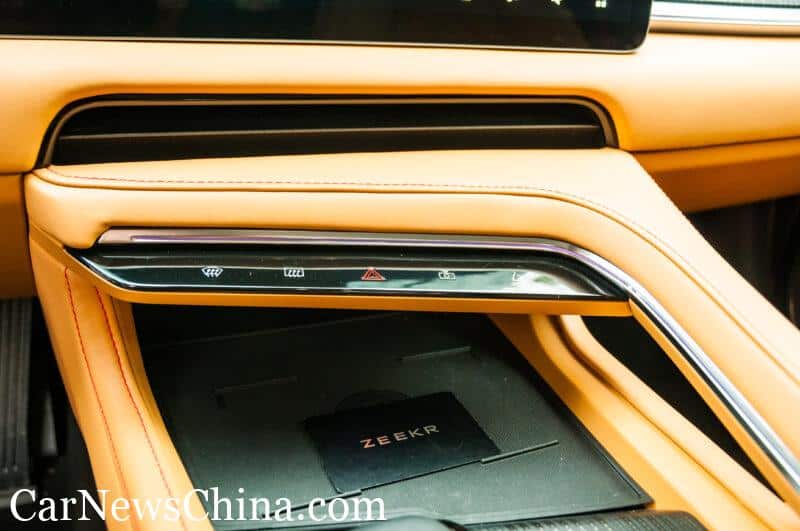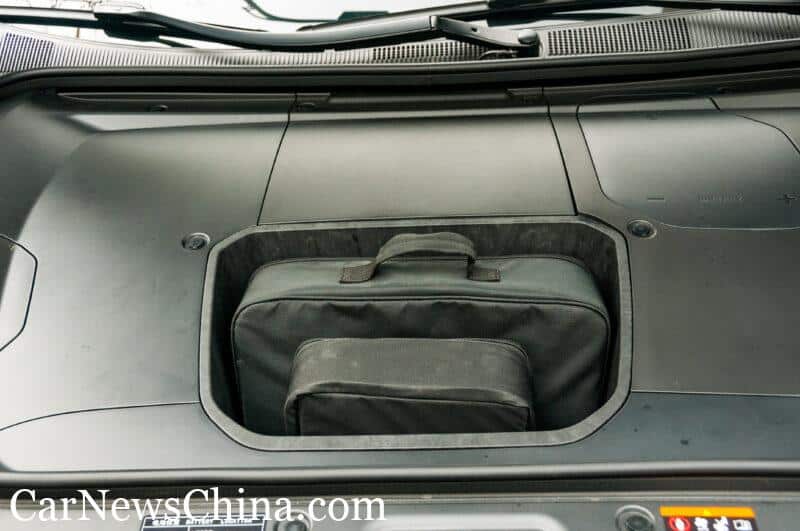Geely surprised everyone at this year’s Shanghai Auto Show when the car we had all been expecting to lead Lynk & Co’s path to an all-electric future became the Zeekr 001. Looks-wise it broadly delivered on the sleek lines previewed by the Zero concept at last year’s Beijing show, but why another brand? Here we get behind the wheel of the 001 to discover what it means to be a Zeekr and why this is a car that matters for Geely.

Over the last decade, three private companies have emerged as the driving force to create competitive Chinese cars. BYD has always had the edge when it came to what China calls new energy vehicles (NEVs), broadly speaking EVs and PHEVs, while Geely had the lead with design and Great Wall had the advantage with SUVs. Increasingly today, these Chinese legacy producers are seeing a challenge from new Chinese EV start-ups.

Geely early on recognized the challenge and the need to pivot. At the 2015 Guangzhou Auto Show, Geely announced its Blue Geely initiative, equalling blue-green in China. Along with launching the Emgrand EV, an electrified version of the tried and trusted EC7, Geely set out five key promises. Most notable was number three “90% of Geely Auto sales will consist of new energy vehicle sales by 2020.”

In November 2021, Geely’s competitor BYD achieved this with sales of 90,121 NEV passenger vehicles against a total of 97,242, but what about Geely? Last year NEVs made up only 5.2% of Geely’s sales volume, down from 8.3% in 2019. Geely needs to pull something out of the hat, and the Zeekr 001 might well be the car they’re looking for.

Particularly from 2020, there has been a massive change in the NEV market in China. Up until then, demand was mainly from ride-sharing companies. Notably, BYD and SAIC brand Roewe did very well through demand from Didi, but even the Emgrand EV benefitted from Geely run Cao Cao, an Uber-like service. From 2020 private sales have taken off. Geely should have benefitted from this with the Geometry brand, but with private sales being mainly skewed to the spectrum’s cheaper and more expensive ends, Geometry has been relegated to fleet sales.

With the Zeekr 001, Geely aims at cars such as the XPeng P7, BYD Han, and forthcoming Nio ET7. And looks-wise, it is certainly up to the challenge. Channeling somewhat of a Porsche Taycan Sports Turismo, look for what Geely refers to as a shooting brake; it strikes a sporty pose. The car has short overhangs with a wheelbase of just over three meters. At the rear, the roofline slopes down rather than having a more abrupt wagonesque end. While this helps with aerodynamics, it is not so accommodating for taller rear passengers; anyone over 1.85m is likely to struggle.
As it is becoming the trend increasingly, the doors are all electrics. Push the button on the handle, and the door opens. Once inside, give a gentle tug on the interior handle, closing it. Upfront, the cabin is far more enclosed than many EVs, with the dashboard and central console wrapping around the driver. Unlike the Tesla Model 3, the driver gets an instrument panel and a head-up display. The Central thought to control is the 15.4-inch infotainment screen. In a sign that Geely intends to export, the system can be changed to English, although currently, the voice control only works in Chinese.

According to Geely, the name Zeekr comes from a combination of the term Generation Z and the word ‘geek.’ As a brand, it is meant to provide a no-compromise mix of performance and connectivity aimed at younger people buyers. Indeed, the model structure seems to be simplified. There are just two trim levels for the 001: We and You. Our test car was the range-topping You, which is only available as all-wheel drive, while the We, along with a dual-motor version, can be had as just a rear-wheel drive.
Plush materials swathed the cockpit of our You version and included Nappa leather, Alcantara, and microfiber. Fit is first-rate and better than the much more expensive Hongqi E-HS9. Equipment levels across the range are high, but in the You, the driver’s seat gets heating, ventilation, and massage functions, although the front passenger seat misses out on ventilation as standard. More surprisingly still, the rear seats are electrically adjustable and can recline to a limited extent – controlled by either button on the fold-down central armrest or the control panel on the rear of the center console. This certainly helps with the headspace situation, proving a problem for taller adults.

Zeekr claims the 001 has 2,144 liters of cargo space, but the usability seems debatable. While the boot is pretty roomy and gets a hidden underfloor space, the seats do not fold down fully flat. Also counted in that total is the large well area between the two-seat rows. There is a small frunk, but this is filled with tool kits for the 001.

With a 0-100 km time of just 3.8 seconds, the dual-motor version has one of the fastest acceleration times seen yet on a Chinese EV. What’s more, for once, the 001 feels like it can handle the power – each axle has a 200kW motor along with a peak of 384Nm torque. Many EVs suffer from a vagueness with the steering, but Zeekr has managed to give the car the feel of a sports sedan with a precision of steering usually only seen in cars like a BMW. This is most noticeable under the Dynamic drive mode, which also tightens up the air suspension. There are also Eco and Comfort driving modes, but they are far harder to tell apart. All-wheel driving versions add Snow, Sand, and Off-road modes, with the latter raising the air suspension to the highest level for greater ground clearance.

Driving around the twisting roads of Baima Lake in Hangzhou, the 001 seemed to relish being thrown around and stayed firmly planted to the tarmac. With the head-up display standard across the range, it means that you can keep your eyes on the road and enjoy the experience. There are three levels of braking regeneration with one-pedal driving selectable via the menu. Like a Tesla, the 001 comes to a halt using this, although the speed only drops off rapidly when traveling below 50 km/h.

Zeekr could be one of the first Chinese brands to feature 800V electric architecture as the SEA platform is capable of it, but Geely confirmed to us 001 doesn’t have it. So unfortunately no faster charging times when using a 480kW charger. This supposedly allows around 100km of range to be added in five minutes or so. Under the NEDC cycle, the You version, which features a 100kWh battery, has a range of 606km, the same battery in the rear-wheel drive. Our version gives the car a 712km range.
As with so many Chinese EVs at launch, the full suite of driving assistance functions are not online and will come later via an OTA. Zeekr’s FalconEye Vidar sensor suite includes long-distance high definition cameras, ultrasonic radar sensors, and a 250-meter range millimeter-wave radar. With many cars now being launched with Lidar, the absence may prove to be the Achilles’ heel for the Zeekr 001.
Zeekr’s tagline is ‘Goodbye dull EVs,’ and here it certainly delivers. Our test car weighed in at RMB360,000 (€49,850, $56,500), and with the factory currently unable to give them quick enough to meet orders, partly due to supply chain issues, early indications are that this is precisely the kind of EV Geely needs.
Edit: In the earlier version of the article, we reported 001 supports 800V charging.









Very nice
The whole of Europe is awaiting a hatchback/ mini suv for approx.€15000
We are over-suvved nowadays.
Barely 10 % of new cars are lesse cars.
Used cars are staggerringly high priced
in Europe.
Why?….because new cars are too expensive
And what do Oem carmakers do ….?
They present suv aftet suv of €50000
Enough….. Give us your promise that ev s are cheaper than petrolcars due to less parts.